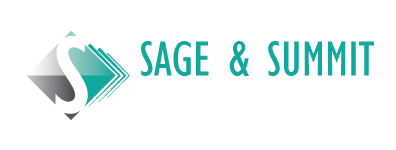Covid no longer rules our days, but the VUCA world that Covid made more extreme, remains. Things are, and will continue to be volatile, uncertain, complex, and ambiguous. VUCAH now contains Hyperconnected, a fifth element that has been added to recognize the immense impact of a hyperconnected world where everything from disease to economics, politics, news, and trends spread at an unnerving pace across the globe.
The first step to dealing with the VUCAH environment is to accept that it is here to stay. We cannot change the world. However, we can choose how we respond to situations, people, and events. We’ve put together a list of 13 factors leaders should keep in mind as they build successful organizations in our challenging environment.
1. Be flexible and adaptable. The VUCAH environment requires us to be flexible and adaptable. We need to be able to change our plans and adapt to new situations quickly.
2. Be innovative. In a VUCAH environment, businesses need to be able to come up with new ideas and new ways of doing things. This means being creative and willing to take risks.
3. Invest in your staff. Provide training, support and initiatives that foster a growth mindset by providing timely constructive feedback and enabling two-way communication.
4. Thinking strategically. In a VUCAH environment, thinking strategically is more important than ever. This means being able to see the big picture and understand the long-term implications of your decisions.
5. Discerning the difference between fact and opinion. In a VUCAH environment, knowing the difference between fact and opinion is essential. This means being able to evaluate information critically and make informed decisions.
6. Be open to new ideas and perspectives. The VUCAH environment is full of new ideas and perspectives. We must be available to these new ideas and willing to change our thinking.
7. Be willing to take risks. The VUCAH environment requires us to take risks. We cannot be afraid to fail. We need to be ready to conduct controlled experiments and try new things. Ensure you agree on the scope and parameters of such experiments and gain stakeholders’ support to mitigate downsides.
8. Build strong relationships. Strong relationships are essential in the VUCAH environment. We need to be able to rely on others for support and guidance. Be curious about others and their work. Learn about dependencies and cross-functional workflows to determine who needs something from you and what you depend upon to deliver it.
9. Stay informed. In the VUCAH environment, it is vital to stay informed. We must be aware of the latest trends and developments using credible sources.
10. Think critically. The VUCAH environment requires us to think critically. We need to be able to evaluate information and make sound decisions.
11. Communicate effectively. Clarity of communication is essential in the VUCAH environment. We need to communicate effectively with others, both verbally and in writing. It means thinking through what we wish to express, for example, the purpose, key messages, and desired outcomes from the communication.
12. Be positive – and realistic. The VUCAH environment can be challenging, but it is essential to stay positive. We need to believe in ourselves and in our ability to overcome challenges. It doesn’t mean being overly optimistic. Simply that we allow ourselves to see the possibilities and work to mitigate the threats.
13. Take care of yourself. The VUCAH environment can be stressful. We need to take care of ourselves physically, mentally, and emotionally. It means prioritising self-care and encouraging team members to manage their wellbeing.
The VUCAH world can be a challenging place, but it can also be exciting. In addition to these tips, organizations can create a more VUCAH-friendly workplace. Including providing employees with the training and resources, they need to deal with change, encouraging collaboration and innovation, and creating a culture of openness and trust. By taking these steps, organizations can create a more resilient workplace and adaptable to change.

